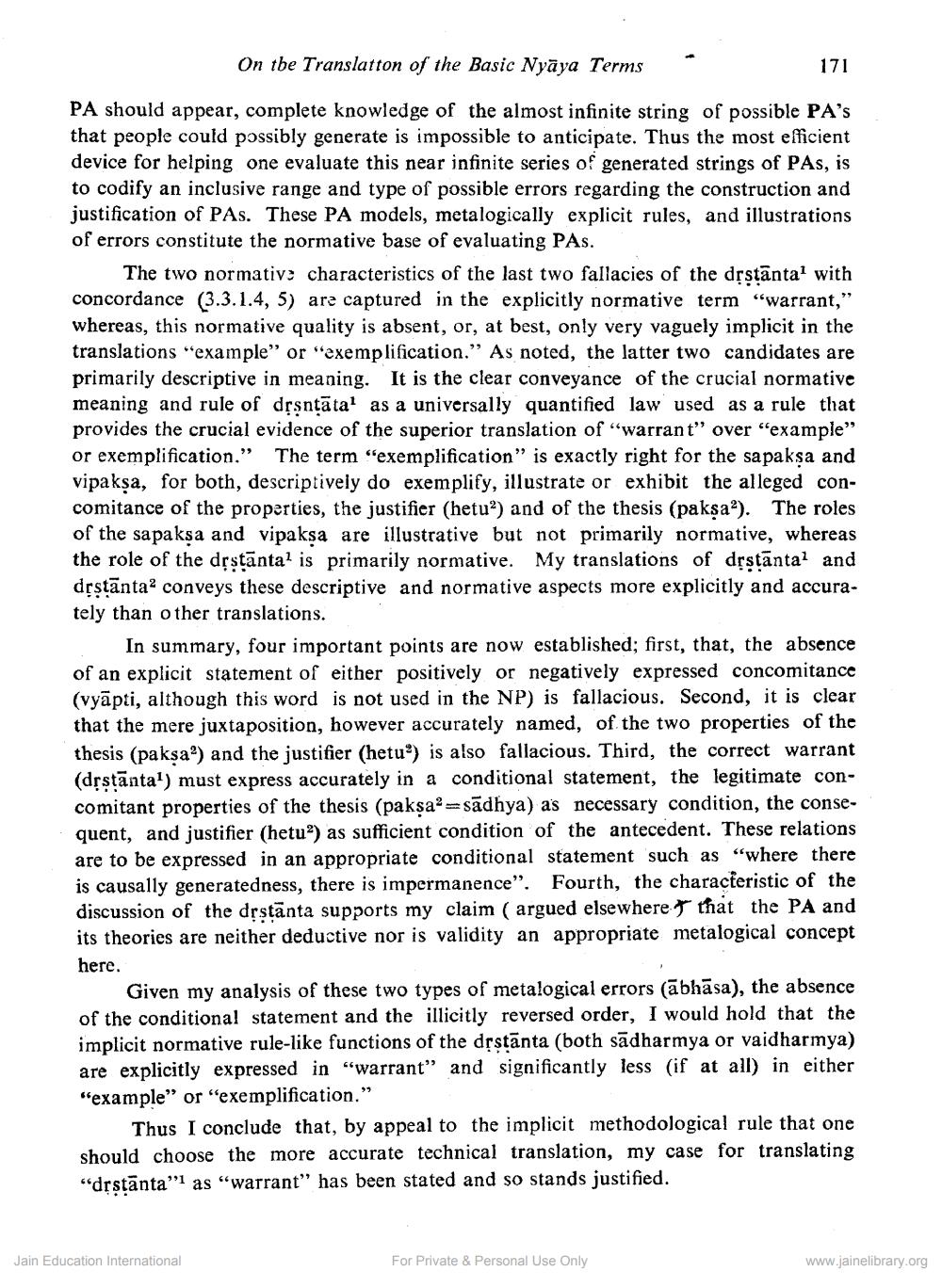________________
On the Translatton of the Basic Nyaya Terms
PA should appear, complete knowledge of the almost infinite string of possible PA's that people could possibly generate is impossible to anticipate. Thus the most efficient device for helping one evaluate this near infinite series of generated strings of PAs, is to codify an inclusive range and type of possible errors regarding the construction and justification of PAs. These PA models, metalogically explicit rules, and illustrations of errors constitute the normative base of evaluating PAs.
The two normative characteristics of the last two fallacies of the dṛṣṭānta1 with concordance (3.3.1.4, 5) are captured in the explicitly normative term "warrant," whereas, this normative quality is absent, or, at best, only very vaguely implicit in the translations "example" or "exemplification." As noted, the latter two candidates are primarily descriptive in meaning. It is the clear conveyance of the crucial normative meaning and rule of drṣntata as a universally quantified law used as a rule that provides the crucial evidence of the superior translation of "warrant" over "example" or exemplification." The term "exemplification" is exactly right for the sapakṣa and vipaksa, for both, descriptively do exemplify, illustrate or exhibit the alleged concomitance of the properties, the justifier (hetu) and of the thesis (paksa). The roles of the sapaksa and vipaksa are illustrative but not primarily normative, whereas the role of the dṛṣṭanta' is primarily normative. My translations of dṛṣṭanta and dṛṣṭānta2 conveys these descriptive and normative aspects more explicitly and accurately than other translations.
171
In summary, four important points are now established; first, that, the absence of an explicit statement of either positively or negatively expressed concomitance (vyapti, although this word is not used in the NP) is fallacious. Second, it is clear that the mere juxtaposition, however accurately named, of the two properties of the thesis (paksa) and the justifier (hetu") is also fallacious. Third, the correct warrant (dṛṣṭanta1) must express accurately in a conditional statement, the legitimate concomitant properties of the thesis (pakṣa-sadhya) as necessary condition, the conse quent, and justifier (hetu") as sufficient condition of the antecedent. These relations. are to be expressed in an appropriate conditional statement such as "where there is causally generatedness, there is impermanence". Fourth, the characteristic of the discussion of the dṛstanta supports my claim (argued elsewhere that the PA and its theories are neither deductive nor is validity an appropriate metalogical concept
here.
Given my analysis of these two types of metalogical errors (abhāsa), the absence. of the conditional statement and the illicitly reversed order, I would hold that the implicit normative rule-like functions of the drstänta (both sadharmya or vaidharmya) are explicitly expressed in "warrant" and significantly less (if at all) in either. "example" or "exemplification."
Thus I conclude that, by appeal to the implicit methodological rule that one. should choose the more accurate technical translation, my case for translating "drstanta" as "warrant" has been stated and so stands justified.
Jain Education International
For Private & Personal Use Only
www.jainelibrary.org




